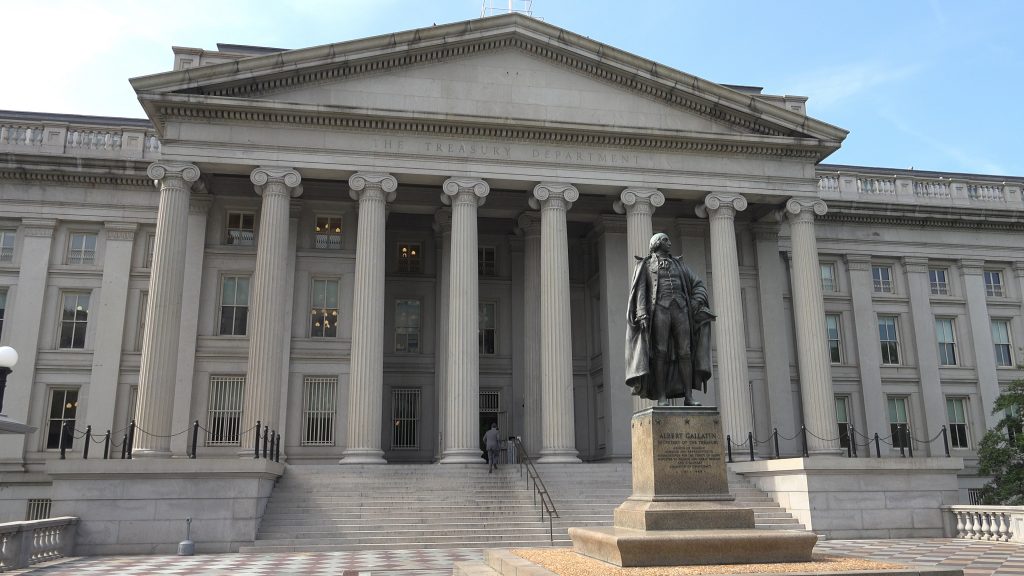Trading Interest Rates Using Surging Treasury Yields
Hopes for a strong economic rebound in 2021 are pushing interest rate expectations higher, catalyzing a rally in U.S. Treasury yields.

Recent economic data suggests inflation may be rising. That means the prices of goods and services in the economy are moving slightly higher, which can be indicative of a healthy economy.
The risk, as outlined previously by Luckbox, is that inflation starts rising too quickly, a development that could be detrimental to a potential global economic rebound in 2021.
The reason rapidly rising inflation is so worrisome is because that type of environment often forces central bankers—like those at the U.S. Federal Reserve—to raise benchmark interest rates. Rising rate environments aren’t preferred during economic rebounds because higher rates tend to damper borrowing and investment.
So, what’s a Fed to do?
More than likely, Fed leaders will try to hold benchmark interest rates as close to zero for as long as they can. But in the meantime, that won’t stop interest rate-sensitive products in the financial markets—which fluctuate based on open-market forces—to move where they will.
And when it comes to interest rates, most market participants prefer to track and trade such activity using U.S. Treasury bond yields. That’s because Treasury yields are interwoven with interest rates and tend to immediately reflect changing sentiment in this sector of the market.
For example, when economic conditions were deteriorating last spring, and the Fed dropped short-term interest rates to zero, yields on U.S. Treasury bonds also plunged.
The strong historical correlation between interest rates and Treasury yields is highlighted in the first chart below. In the second chart, one can see how Treasury yields collapsed across the board as the Fed cut interest rates to compensate for the economic destruction wrought by coronavirus lockdowns.
With the above insights in mind, the strong historical relationship between prevailing interest rates and Treasury yields can now be applied to potential opportunities in the current environment.
As referenced earlier, the Federal Reserve has already communicated that it plans to leave benchmark interest rates (i.e. the federal funds rate) at near-zero for as long as possible. But despite that firm stance, recent movement in Treasury yields suggests that sentiment on interest rates in the marketplace is starting to shift.
After dipping to record lows last year, the yields on both the 10-year and 30-year U.S. Treasuries came alive in recent weeks. The 10-year Treasury yield, for example, dropped below 0.50% in August of last year. Today, that same yield has rallied all the way back to roughly 1.10%.
Similarly, the yield on the 30-year U.S. Treasury Bond plummeted below 1% for the first time ever in 2020, but that yield has now rallied all the way back to nearly 2%.
The recent rally in Treasury yields is likely attributable to several factors.
First, Treasury yields are often tied to expectations of the American economy. With a massive vaccination program currently underway in the United States, most economic forecasts suggest that a strong economic rebound will unfold at some point in 2021. Undoubtedly, some portion of the recent rally in Treasury yields is attributable to that optimism.
Treasury yields also tend to be sensitive to inflation—a metric that is closely tied to the health of the underlying economy. Recent inflation data surprised to the upside, revealing that the prices for goods and services in the United States were accelerating more quickly than expected. If inflation accelerates too quickly, the Federal Reserve would eventually be forced to raise rates, and Treasury yields are starting to reflect that possibility.
The question, therefore, is whether expectations over the economic rebound will in fact materialize—and if so, when. Forthcoming data on the economy will serve to answer those questions.
If a strong economic rebound does materialize, it’s almost certain that Treasury yields will extend their strong run during H1 2021. However, if the pandemic worsens, or if the economy deteriorates further, then yields could retrace the recent rally.
Investors and traders seeking to learn more about trading interest rates using U.S. Treasury yields may want to consider a futures product offered by the Small Exchange. The Small Treasury Yield (S10Y) offers direct exposure to movement in the 10-year Treasury yield.
For example, if the 10-year Treasury yield was trading 1.10%, then the S10Y would be priced at 11.0. An investor or trader expecting Treasury yields to rise might therefore purchase the S10Y to participate in an extension of the current rally in yields.
On the other hand, the opposite position (shorting S10Y) might be deployed by an investor/trader who believes the darkest days of the pandemic still lie ahead. Because under that nightmare scenario, Treasury yields would likely pull back from recent highs.
Outside of speculating on the directions of yields, a yield futures position could also theoretically be used to hedge another position, or the portfolio as a whole.
Readers seeking to learn more about trading interest rates using Treasury yields (and particularly the S10Y) can review a recent episode of Small Stakes on the tastytrade financial network when scheduling allows.
To follow everything moving the markets, readers can also tune into TASTYTRADE LIVE, weekdays from 7 a.m. to 4 p.m. Central Time.
Subscribe to Luckbox in print and get a FREE Luckbox T-shirt! See SUBSCRIBE or UPGRADE TO PRINT (upper right) for more info.
Sage Anderson is a pseudonym. The contributor has an extensive background in trading equity derivatives and managing volatility-based portfolios as a former prop trading firm employee. The contributor is not an employee of Luckbox, tastytrade or any affiliated companies. Readers can direct questions about any of the topics covered in this blog post, or any other trading-related subject, to support@luckboxmagazine.com.



















